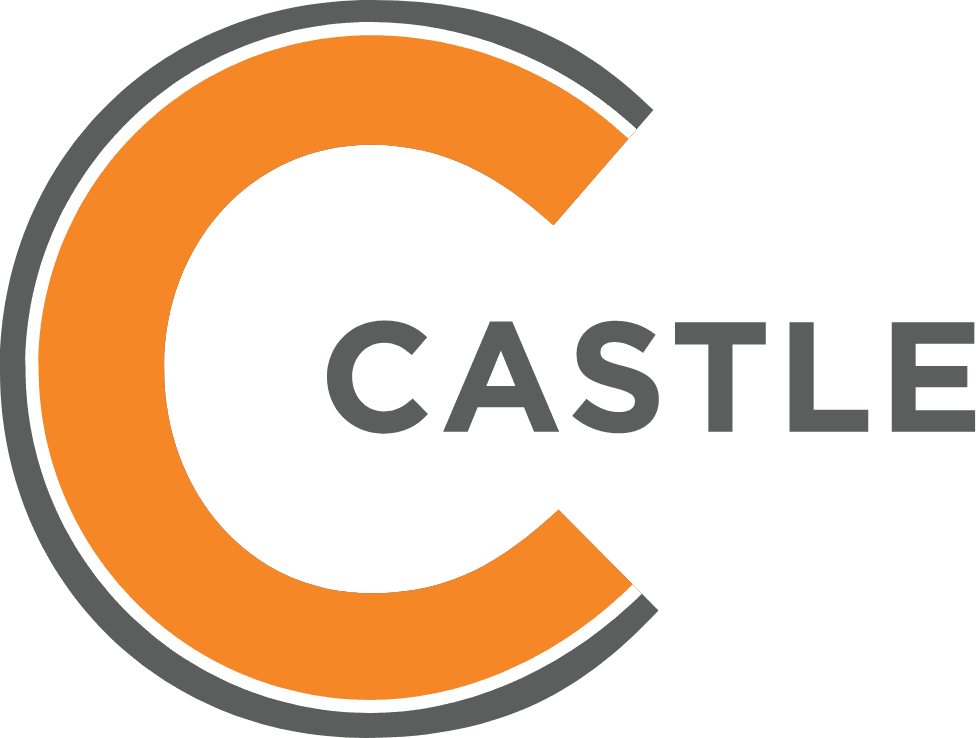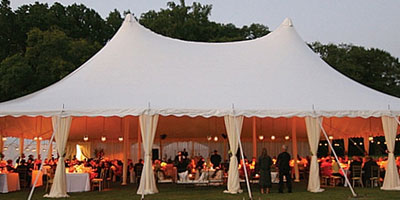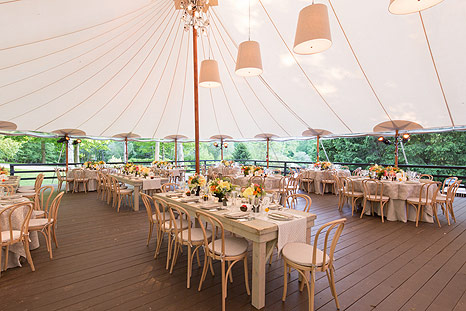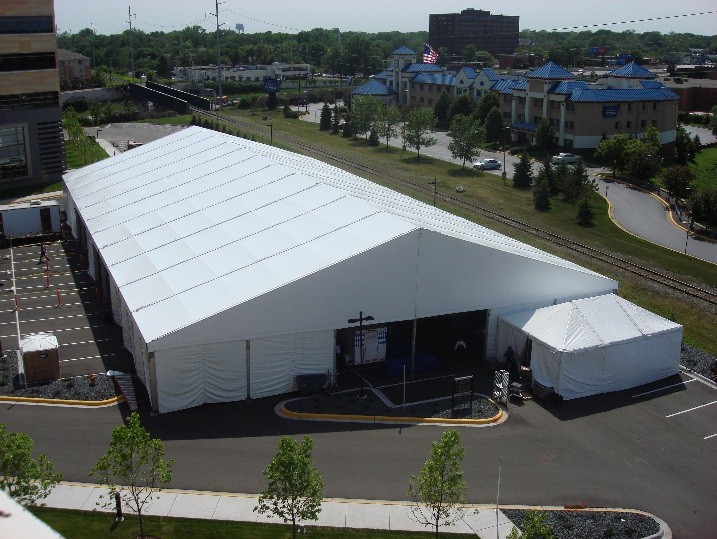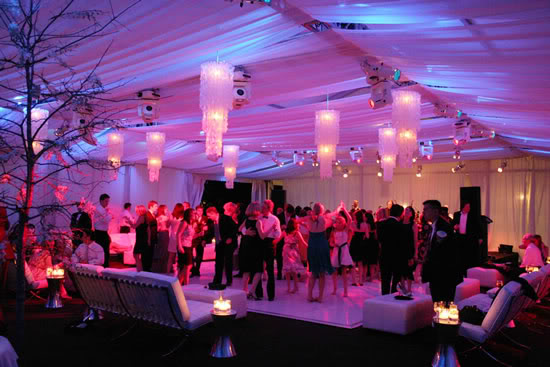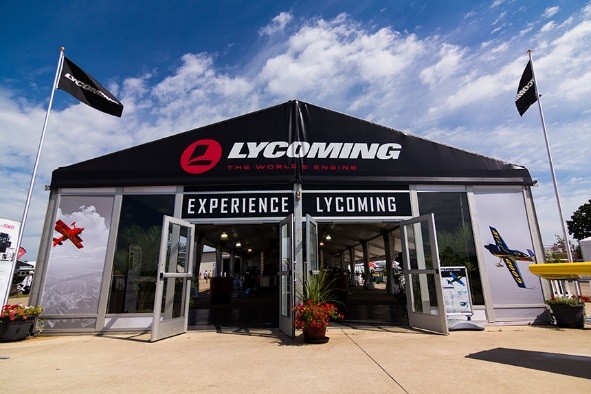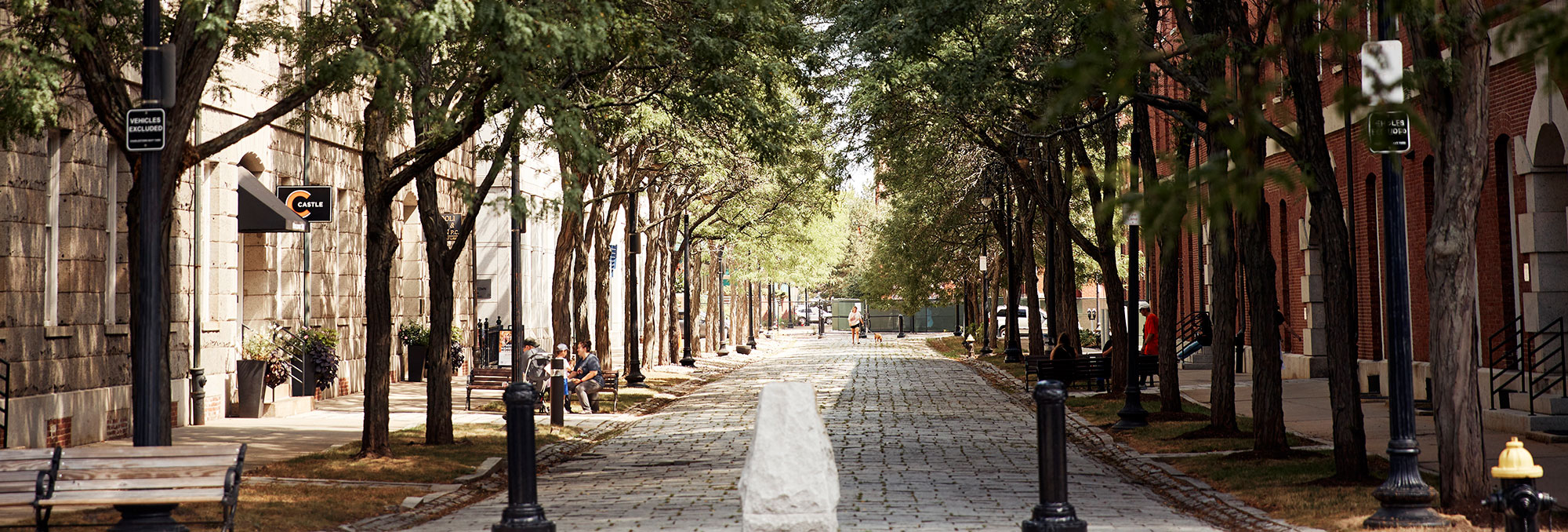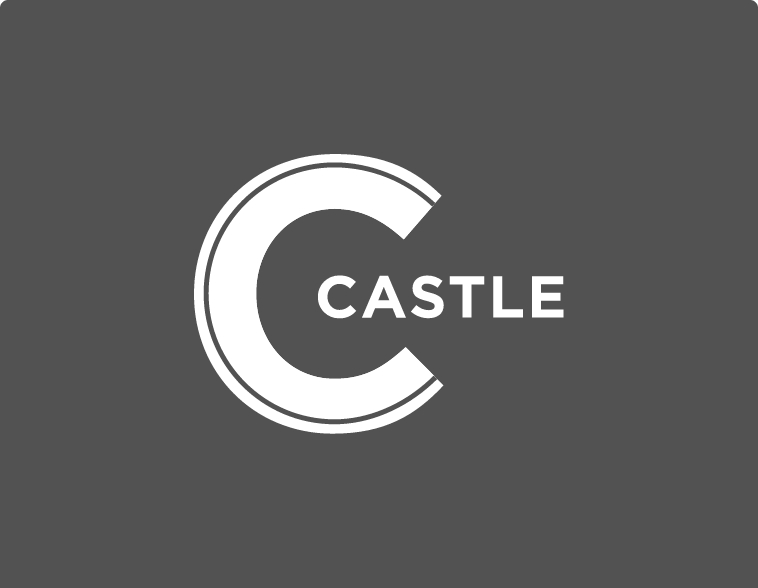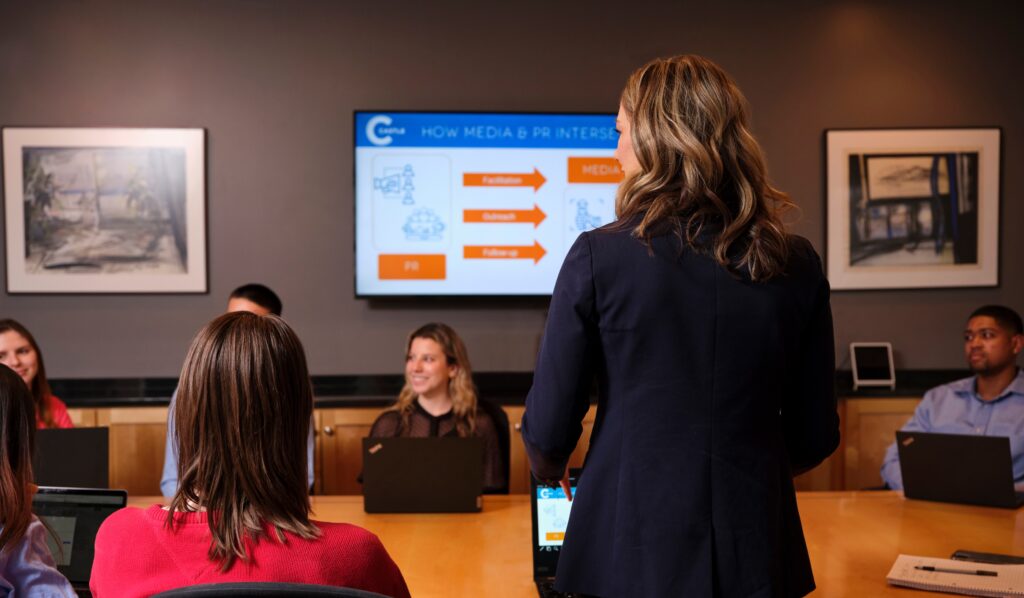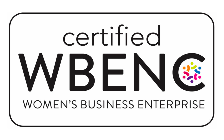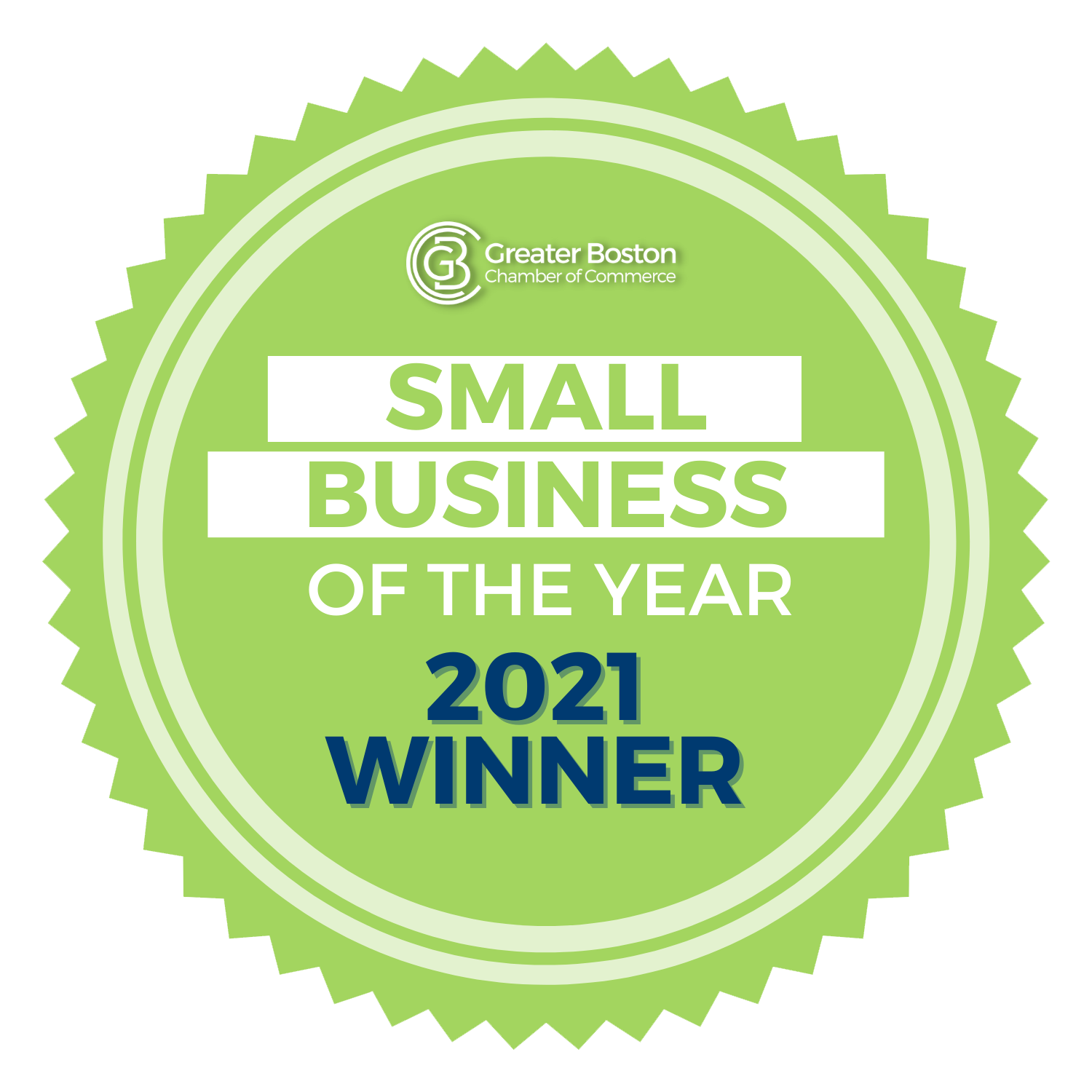Summer is here and the season for outdoor events is upon us. This means that tents may become part of the event plan – either as a weather contingency (for rain or sun cover), to create a more defined and/or comfortable outdoor environment or when indoor space is limited. But more than just a place to gather and feed guests, a tent and its various components can become an important part of the event design.
When selecting a tent, the appropriate size and type of tent are important considerations. How much space is available? Is the ground level? Can you stake into the ground or is there a need for water barrels or cement anchors to secure the tent? Is the event casual or formal? All of these questions will help determine which style of tent suits your needs.
There are many different tent options to choose from. Traditional pole or tension tents have high peaked roofs and aluminum center poles that support the structure. Available in a variety of sizes, these tents immediately give the impression of a special event and are often used for social functions. Sailcloth tents are similar to traditional pole tents but are made from sail-like material rather than vinyl. Usually oval in shape with wooden center poles, these tents are elegant and the translucent sail fabric allows more light to shine through. Both traditional pole tents and sailcloth tents are generally staked into the ground. When determining the amount of space required, the stake area (a minimum of five feet around) must also be factored into the footprint.
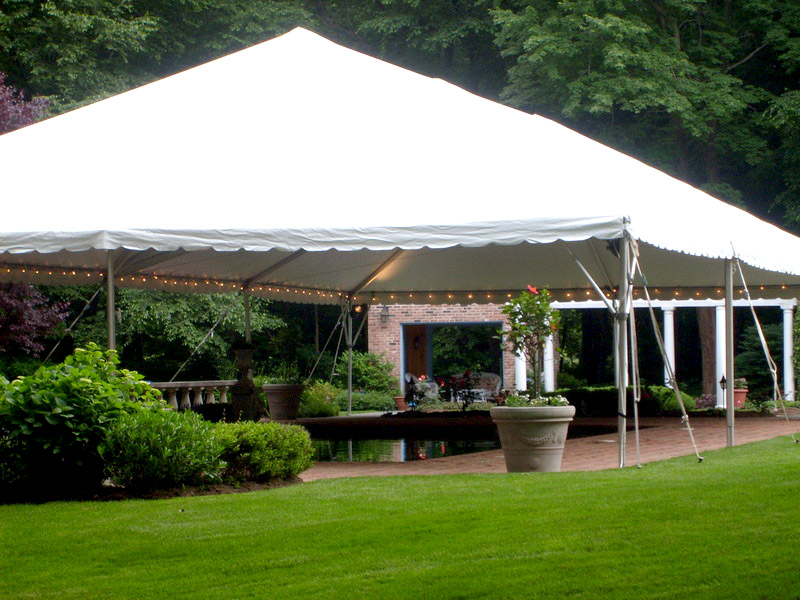
Frame tents are self-supporting aluminum structures covered with vinyl fabric. These tents can be staked into the ground but when staking is not possible, such as on patios or parking lots, frame tents may also be secured by anchor weights. Another benefit is that there are no center poles, allowing more flexibility in seating and clear lines of sight.
When there is a need for a more solid structure or longer installation period, clear span tents are ideal. Made of heavy duty aluminum beams with vinyl roofs, these tents are structurally engineered to handle the elements. The beams can support heavy rigging such as lighting trusses and projection equipment and are even strong enough to support a second or third floor. Like the frame tent, there are no center poles or sight line obstructions. When finished with side walls and flooring, clear span tents can feel more like a building than a tent, which is why they are used for many fashion shows, large gala functions and corporate presentations.
Once the style of tent is selected, it is important to determine the proper tent size and site area. Aside from seating, make sure to factor for items such a stage, dance floor, bars, rear screen projection, back stage, aisles and foyer area. The required interior square footage can be calculated using the same guidelines as an indoor ballroom (see chart here). However, a tent may require additional area around the structure for generators and HVAC units, fire truck egress and pedestrian traffic.
Next comes the tent design. There are many elements that can be utilized to help set the tone and create the desired atmosphere. Here are some considerations.
Flooring – this depends on budget and style of event. Sometimes grass beneath guests’ feet is the perfect setting for a seaside affair or company picnic. However, flooring becomes more important when the ground is not level or to ensure guests feet remain dry during inclement weather. Options range from hardwood floors for a more sophisticated look and feel to carpet or turf. For a public event or trade show, rubber tiles may be preferred.
Walls – Tents can be outfitted with a variety of materials that enclose the tent. White vinyl side walls are the most basic but clear vinyl walls are also available to allow more light into the tent. More upscale and costly options include glass side panels, screens or mesh fabric. Keep in mind that glass panels or clear vinyl will make the tent warm (potentially too warm) on sunny days.
Lighting – a tent can be totally transformed through the use of lighting. Chandeliers, lanterns, bistro lights, or elaborate truss work with specialty lighting and gobo projections can all serve to soften the look and/or make the event glow.
Ceiling treatments – hanging lanterns, pennant flags, bunting or draping can disguise the ceiling beams and add dimension and color to the event.
Heating and air conditioning – creating a comfortable environment is key. Sophisticated HVAC units can be installed under the flooring or vented into the side walls. A more cost effective option would be to install ceiling fans or fans on the tent uprights. Of course, if there is a nice breeze, removing some of the air walls will allow air passage.
Branding – for corporate outings, festivals and promotions, printing on vinyl side walls and roof panels offer great branding and messaging opportunities on the exterior of the tent.
Over the years, Castle has become an expert in tented events working with some of the area’s best event partners. Make sure to check out this clear span tent installation that Castle managed last year in Cambridge, MA with Access Tent. The finished product was a fully carpeted, climate controlled structure, complete with glass walls with custom graphics, a unique ceiling treatment, a theater space and concierge lounge. With tents, the sky is the limit!
